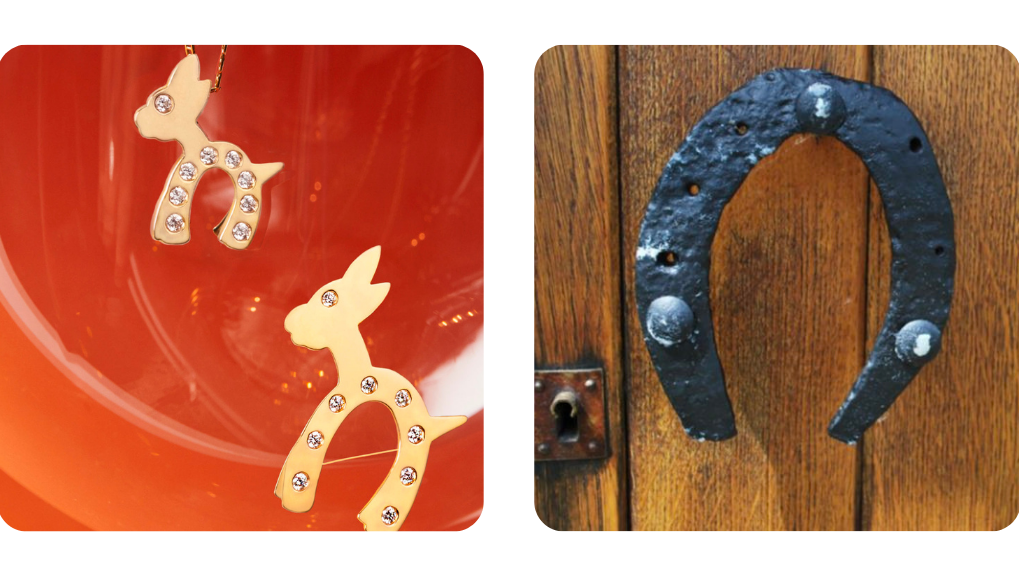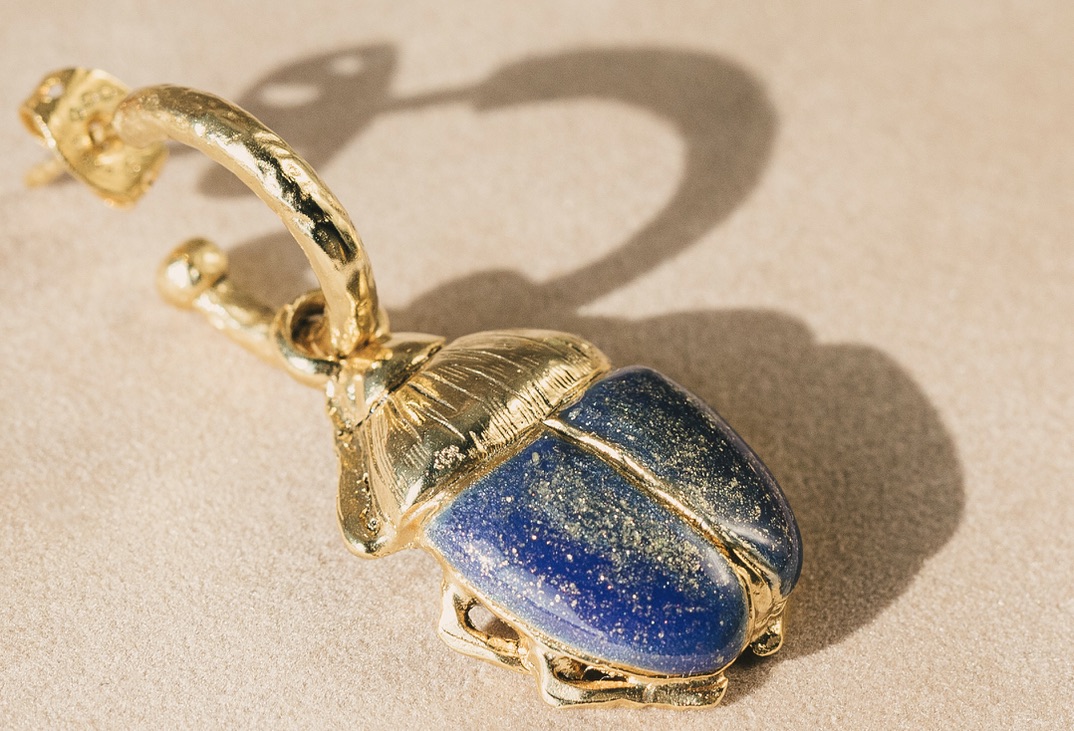HORSESHOE is a symbol of good fortune which developed in the Middle Age.
The main legend around the horseshoe as a lucky charm is the story of Saint Dunstan (10th century) the patron of blacksmiths, goldsmiths and jewelers. He was visited by the devil who asked him to attach horseshoes to his horse.
Instead the blacksmith nailed a horseshoe on a foot of the devil causing him horrific pain. The devil begged the blacksmith to remove the horseshoe and the blacksmith agreed on the condition the devil promises never to enter a home where a horseshoe is hanging.

Matter-of-fact when someone came across a lost horseshoe he could exchange it against money at the blacksmith’s since the metal was at the time valuable. The horseshoe thus becomes a synonym of luck.
There is a debate on the proper way to position a horseshoe : Some believe that a horseshoe with the two ends pointing up collects good luck and keeps it from falling out, while other traditions state that the two ends should point downward so that luck pours onto those who walk through the door.

The same question of the positioning is often asked when acquiring an ELEPHANT lucky charm: which way should a lucky elephant hold its trunk?
A trunk is essential to the elephant, for drinking, eating, pushing away enemies. Elephants point their trunk upward to greet friends and express joy.
The origins of the lucky elephant can be found in India with “Ganesha”, the Hindu god of wisdom, good beginnings and the remover of obstacles who is represented with an elephant’s head.

According to the Chinese concept of feng shui, placing a statue of an elephant, or a pair of elephants, at the front door brings good luck and protection to the household.
The belief that elephants are only lucky if their trunks are up seems to be a North American superstition meaning that you are showered with luck. Today most jewelers have adopted this superstition.
And we terminate this lucky charms overview by going back to ancient Egypt were sacred talismans and good fortune amulets were taken very seriously.

The SCARAB which was dedicated to the morning Sun God and was seen as a symbol of renewal and rebirth occupied a special place in the life of Egyptians. The Egyptian scarab was a stylised dung beetle that molds dung into balls and rolls them around during the day.

The ancient Egyptians compared it to the cycle of the sun that would disappear at night and come back in the morning and the scarab became associated to the Sun God.
Thus the morning sun Khepri was represented with a humanoid figure and the face of a dung beetle. The scarab also lays its eggs in a dung ball. The babies feed on the manure until they crawl back to the surface.

Colorful scarabs on chokers and cocktail rings by Amanda Marcucci. 24k gold plated silver, amethysts, turquoises, malachite and onyx (right).
The ancient Egyptians, seeing the old scarab hide under the earth and young scarabs come out, chose the scarab as the symbol of rebirth.
Today many jewelers have adopted the powerful symblic of the Scarab and offer colorful variations for a protective charm that comes from very ancient times.

Close up of jewellery by Amanda Marcucci. 24k gold plated silver, amethysts, turquoises, malachite and onyx (right).
By Sanja Spahr


